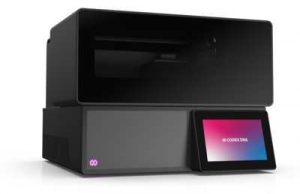Codex DNA End-to-End Workflow for Storing and Retrieving Data in Synthetic DNA
PoC studies go beyond typical DNA storage projects to ensure high-fidelity data recovery within automated synthetic biology workflow.
This is a Press Release edited by StorageNewsletter.com on May 6, 2022 at 2:01 pmCodex DNA, Inc. announced the completion of PoC demonstrations showing that its technology can be used effectively for encoding digital data in DNA sequences, and that the information that was stored could be retrieved accurately afterward.
BioXp 3250 system

This validation is a step in the company’s efforts to develop next-gen tools and applications for DNA storage.
“While other research teams have already proven the viability of storing data in DNA, there has been less attention paid to ensuring that data can be retrieved and decoded with high fidelity,” said Dan Gibson, PhD, CTO. “Our team, which includes some of the first scientists to ever encode data in DNA, is committed to developing a reliable, accurate, and automated workflow to make DNA data storage and retrieval broadly accessible.”
DNA can be used to store digital data by converting the binary code of 0s and 1s in data files into the A, C, G, and T building blocks of nucleic acids. The storage capacity of a DNA molecule is significantly higher than that of standard data storage technology, with the potential for encoding more than 200PB of data per gram of DNA. It also lasts longer; DNA has been shown to remain intact for more than 1 million years. As a result, this method of storing and retrieving digital data using DNA can change the way data is stored.
In this study, the firm’s researchers used the company’s proprietary software algorithm to encode data files into DNA sequence, optimized the synthesis of that DNA sequence, and then demonstrated the retrieval and decoding of the DNA data with sequencing, completing the end-to-end workflow. The team used this approach for an audio file – a brief snippet from ‘Hey Jude’ by The Beatles – and an image file of the company logo. The work leverages a company’s patent (US 10,818,378) for encoding data into nucleic acids.
Separately, with these same algorithms and approach, the firm’s researchers used the BioXp 3250 system to both store and retrieve an image file representing the Codex DNA logo. The company logo was divided into 18 DNA sequences that were individually synthesized and error-corrected on the BioXp system. The DNA data fragments were further processed on the same BioXp system to generate DNA sequencer-ready materials. Once sequenced, the file was found to match the original data file exactly, thus demonstrating an end-to-end automated solution for DNA data storage and retrieval.
“Since we first launched the BioXp system for automated DNA synthesis, we have been dedicated to supporting the scientific community by continually expanding the system’s capabilities and applications,” said Todd R. Nelson, PhD, CEO. “We are excited to make progress toward a complete workflow for DNA storage and retrieval, an area with tremendous potential for a broad range of industries.”
The company’s R&D team continues to enhance its DNA storage capabilities within the BioXp system workflows, including the algorithm to ensure that data is encoded only in the most stable and sequenced regions of DNA and the Gibson Assembly method for file indexing and compression. In addition, the firm is applying its recently announced SOLA enzymatic DNA synthesis reagent solution to write DNA rapidly, efficiently, and with high accuracy for data storage applications.
About Codex DNA
It is empowering scientists with the ability to create novel, synthetic biology solutions for many of humanity’s challenges. As inventors of the industry-standard Gibson Assembly method and the first commercial automated benchtop DNA and mRNA synthesis system, it is enabling rapid, accurate, and reproducible writing of DNA and mRNA for numerous downstream markets. Its BioXp system consolidates, automates, and optimizes the entire synthesis, cloning, and amplification workflow. As a result, it delivers virtually error-free synthesis of DNA/RNA at scale within days and hours instead of weeks or months. Scientists around the world are using the technology in their own laboratories to accelerate the design-build-test paradigm for novel, high-value products for precision medicine, biologics drug discovery, vaccine and therapeutic development, genome editing, and cell and gene therapy. the firm is a public company based in San Diego, CA.














 Subscribe to our free daily newsletter
Subscribe to our free daily newsletter


